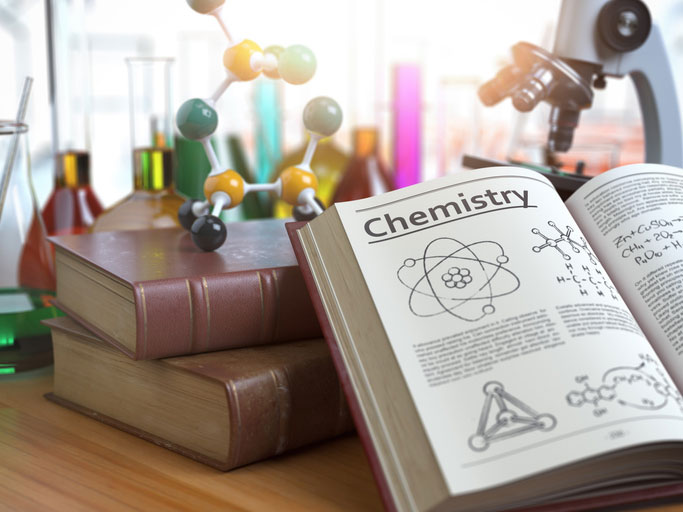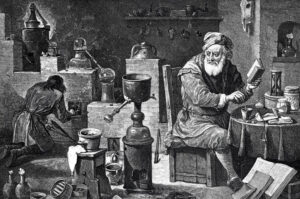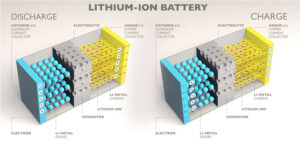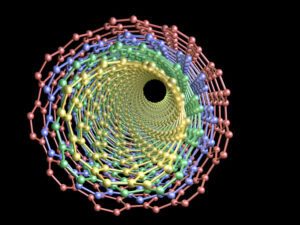

Humankind’s working understanding of chemistry has evolved over the millennia, starting when early man attempted to harness and reproduce the natural chemical processes observed in the wild. You could even say that man’s first attempts to master ignition and fire represented the first chemistry experiments.
Our understanding and experiments with chemical processes appear in both predictable and unexpected places. Chefs rely on chemistry to cook savory meals… athletes use chemistry to build strength and train for competitions… and, of course, the chemical processes in lithium-ion batteries makes it possible for today’s EVs to outshine the more antiquated chemistry behind fossil fuel refining and internal combustion engines.
What is Chemistry?
Chemistry is the scientific study of compounds –atoms, ions, and molecules– and how they interact with each other. In a literal sense it’s the glue that connects compounds together. In a figurative sense it’s the glue that connects the different branches of science together:
- The physics of astronomy produced the fundamental elements of chemistry
- The fundamental elements of chemistry formed the earth
- The chemistry of the earth resulted in biology and life
- Biology uses chemistry to create energy and live
- We use chemistry to understand physics and the universe
Coursework in Chemistry is Right at Home in a Liberal Arts Curriculum
From your first introductory course that covers the colorful history of medieval alchemists –an Arabic word derived from ancient Greek– to advanced inorganic chemistry, the field of chemistry is never far from the liberal arts.
General Chemistry covers important concepts like stoichiometry, a term first used in relation to this branch of science by a chemist in the Prussian Province of Silesia in modern-day Poland.
Laboratory Chemistry is hands-on fun with Bunsen burners, fume hoods, autoclaves, vacuum chambers, and centrifuges.
Inorganic Chemistry examines the relationships between non-carbon-based chemical compounds. This notably includes metals, with some of the original inorganic chemists being Bronze and Iron Age founders whose work would radically transform the trajectory of civilization.
Organic Chemistry pertains to carbon-based compounds… including us, humankind.
Biochemistry covers the chemical processes of living organisms. This includes ATP, life’s common energy currency, and amino acids, life’s universal building blocks. All life on earth uses ATP and is built from the same 21 essential amino acids.
Pedagogical Chemistry has one foot in the field of chemistry and one in the field of teaching. This is where tomorrow’s chemistry teachers are trained in how to be effective educators, a discipline that stretches back to pre-history.
The History of Chemistry is Steeped in the Liberal Arts
 Chemistry’s history is a cumulative story of human civilization and ingenuity, a perfect fit within a broad liberal arts curriculum.
Chemistry’s history is a cumulative story of human civilization and ingenuity, a perfect fit within a broad liberal arts curriculum.
The atom, a fundamental piece of chemistry, was theorized to exist as far back as ancient Greece and India. In Greek atommeans something which cannot be cut, and until very recently it was widely accepted that atoms were the smallest fundamental units of matter. The concept of something being indivisible philosophically paved the way for the late-19th-century and 20th-century discoveries of the electron, proton, and neutron.
Alchemy, stretching back to Greco-Egyptian times, tickled the imaginations of countless successive generations and empires. Exemplifying the human tendency towards mysticism and magic, Arab, Byzantine, Indian, and European kingdoms all sought the mythical Philosopher’s Stone that could turn ordinary metals into gold and silver, not to mention grant immortality. Though alchemy was eventually discarded by science, the field made an important contribution to chemistry with an early form of what we know today as the Periodic Table of the Elements.
Chemistry studying the behavior of radioactive elements ushered in the nuclear age. Advances in nuclear chemistry were notably made by graduates of universities in Warsaw (Marie Curie), Paris (the Curies and Henri Becquerel), Zurich (Wilhelm Röntgen), and Christchurch and Cambridge (Ernest Rutherford). These scholars came from the capitals of cities known for their art, architecture, philosophy, and cosmopolitan cultures. Thriving in a liberal arts backdrop, they would go on to win countless Nobel Prizes in chemistry and pave the way for everything from medical radiology to nuclear energy and the atomic bomb.
It’s an Exciting Time to Be Studying Chemistry
 Just as ceramic kilns took advantage of chemistry to advance human civilization from the stone age to the Copper, Bronze, and Iron Ages, today semiconductor foundries are bringing us into the most advanced stage of human and technological development: the Silicon Age.
Just as ceramic kilns took advantage of chemistry to advance human civilization from the stone age to the Copper, Bronze, and Iron Ages, today semiconductor foundries are bringing us into the most advanced stage of human and technological development: the Silicon Age.
Many of the most state-of-the-art advances in semiconductor manufacturing rely on concepts that are pure chemistry, from doping silicon chips with phosphorus to chemical etching with plasma ions.
Recent chemistry advances in battery technology have also finally made it possible for electric vehicles to compete in earnest with their gasoline-powered peers. Specifically, this is thanks to advances in intercalation, a chemistry term that describes how lithium ions interact with graphite in a way that allows for more efficient power usage and power charging.
We have chemistry to thank for these developments in semiconductors and power storage, all of which have important implications for topics like sustainability, renewable energy, and computing power. A solid background in the liberal arts gained through a bachelor’s or master’s degree in liberal studies provides a way of understanding these modern developments and how they can be wielded for the good and improvement of society.
The Future of Chemistry is Enriched by a Worldview Influenced by the Liberal Arts
Recent advancements in chemistry have made the present the most exciting time ever to work in the field of chemistry, but that doesn’t mean the future of chemistry is going to be any less enthralling.
Carbon nanotubes are already in development, but their perfection as measured in purity is still just around the corner. These nanometer-sized structures show amazing promise when it comes to strength, thermal insulation, and electrical conductivity. Future applications are expected to include use in super-capacitors, rechargeable batteries, and high-strength mechanical parts.
Graphene is another advancement made possible by chemistry; essentially a 3D carbon nanotube that has been rolled out into a 2D nano sheet. It shares many of the same promises of carbon nanotubes, boasting the potential to be 200 times stronger than steel while simultaneously being six times lighter.
Self-healing concrete is another development that’s just around the corner that relies on complex chemistry. Taking advantage of properties of chemistry and biochemistry this has already shown promise in prototypes. In construction, two-times as much concrete is used than all other construction products combined, and this concrete has a shelf life.
 Self-healing concrete inoculates poured concrete with bacterial spores and a nutrient that feeds the bacteria once it wakes up. The bacteria are activated when it comes into contact with air, such as when a crack appears in the concrete. Once the bacteria wakes up it consumes the nutrient and excretes calcium carbonate as a waste product, thereby literally sealing the crack with limestone. This has the potential to save lives and protect infrastructure that is otherwise compromised when concrete supports fail and buildings collapse, and is projected to become the industry standard.
Self-healing concrete inoculates poured concrete with bacterial spores and a nutrient that feeds the bacteria once it wakes up. The bacteria are activated when it comes into contact with air, such as when a crack appears in the concrete. Once the bacteria wakes up it consumes the nutrient and excretes calcium carbonate as a waste product, thereby literally sealing the crack with limestone. This has the potential to save lives and protect infrastructure that is otherwise compromised when concrete supports fail and buildings collapse, and is projected to become the industry standard.
These are just the latest possibilities for how chemistry is going to carry humanity into the future, complete with its many cultures, religions, philosophies, art, music and languages. These advancements stand on the shoulders of the cumulative developments in chemistry that humanity has made since the dawn of civilization, and will no doubt continue going forward into the future. And as this process continues the liberal arts will remain a relevant context for understanding where we’ve come from and where we’re going.




